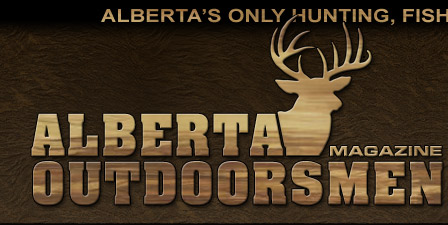|
 |
As the holder of a Registered Fur Management Area (RFMA) in Alberta, I receive many letters each year informing me of work taking place on my RFMA. Whether that work is oil and gas, pine beetle surveys, or logging, I must be notified prior to the work commencing.
Every year, I receive at least one letter from a logging company informing me that they will be commencing with herbicide spraying of cutblocks, either by backpack or by helicopter. The herbicide generally used by logging companies is glyphosate, the active ingredient in Roundup.
 |
Glyphosate is used to kill deciduous broadleaf tree species that compete with pine or spruce seedlings planted in cutblocks. In other words, glyphosate kills pretty much everything, including aspen, alder, birch and willow, which leaves behind a sterilized forest of pine or spruce.
The loss of everything deciduous also has a large impact on many species of animals, including moose. It is suggested that British Columbia’s moose population decline can be attributed to herbicide spraying. After all, moose food is exactly what glyphosate kills.
As well, a BC study showed that 95 percent of all bird nests were in aspen trees, even though they were only 15 percent of the forest (Martin, 2011). Considering there are concerns over the number of birds returning to the boreal forest each year to nest, it does appear quite silly to be killing off the trees the birds prefer.
Trappers also believe that herbicide spraying has a large effect on furbearing animals. With the killing of aspen forests and everything green-leafed with them, there is a huge loss of food and cover for grouse, hares, shrews, mice and voles, the primary food source of many furbearing animals. No food equals no furbearers.
According to the US Forest Service, “the aspen ecosystem in western North America provides habitat for at least 55 species of wild mammals.”
There is roughly 30,000 hectares a year of forest being sprayed with glyphosate in Alberta, which is nearly 40 percent of the 80,000 hectares being logged yearly.
Glyphosate is also heavily used in agriculture and grain farmers use it prior to harvest. Grain farmers also insist that the herbicide increases carbon sequestration, reduces soil erosion, and improves soil health. But that hasn’t stopped Kellogg’s from phasing out the use of pre-harvest glyphosate as a drying agent for wheat and oats by the end of 2025. It is expected that others will follow suit as well.
In 2015, the World Health Organization’s International Agency for Research on Cancer (IARC) classified glyphosate as a probable carcinogenic to humans. However, Health Canada and the U.S. Environmental Agency, among others, have said that glyphosate is not a carcinogen. Regardless, there are thousands of lawsuits being filed across North America by claimants that say glyphosate is the reason for them having cancer. I can’t speak to that but what I do know is that herbicide spraying by logging companies in our boreal forest is having an effect on furbearing animals.
It is also suggested that by removing everything deciduous from our forests, we are creating forests ripe for burning. Removing slow-burning trees such as aspen may be causing fires to travel farther, faster, and to burn hotter. Over the last few years, how much wildfire smoke have you breathed in while sitting in your backyard?
Quebec banned the use of glyphosate in forestry way back in 2001. Perhaps it is time for Alberta to follow suit. ■
For previous Outdoor Pursuits click here.
|
|
|
|


